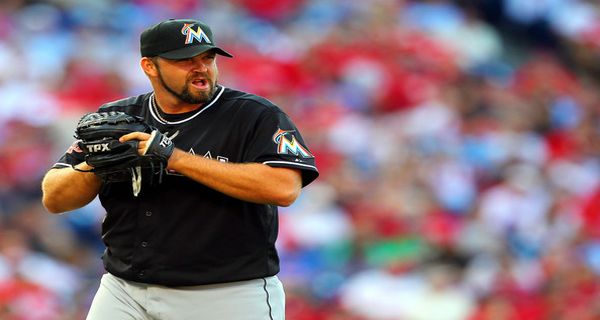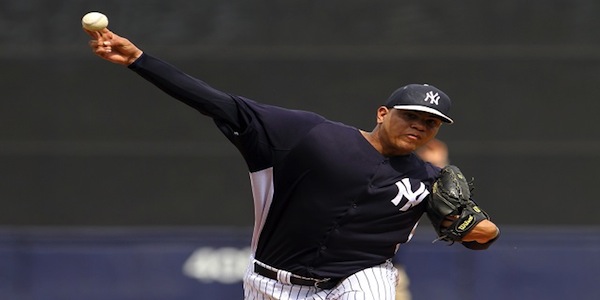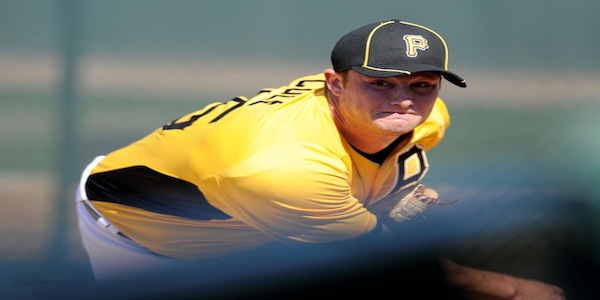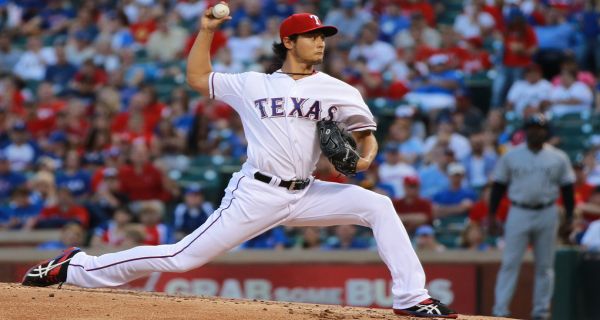2013 Fantasy Baseball: A Deep Look at Closers

Unofficially, this is a continuation of the total run series. However, using total runs when looking at relief pitchers presents a number of problems. It’s one thing to translate total runs into home runs, runs, and RBIs. It’s more difficult with starting pitchers, but the statistic usually translates into some level of quality in terms of ERA, WHIP, and strikeouts. Closers are their own animal.
In the preseason, I discussed why I hate closers. Naturally, I don’t hate them the same way we hate Al Queda, hangnails, or intestinal flu. I don’t even hate the closers themselves necessarily. I just hate how modern baseball uses some relief pitchers as ninth inning specialists and pay them an obscene amount of money in comparison with other relief pitchers. For our purposes, we draft closers unnecessarily high in direct proportion to the value that they bring to our fantasy squads. They contribute primarily to one of out five or six pitching categories.
However, that isn’t the issue I’ll be highlighting today. Their closest fantasy comparison would be to the place kicker in football. Usually, their value to their team comes in terms of their opportunities and not their quality. I would much rather see quality rewarded than quantity, but in the game of closing it is squarely on the side of quantity. Just compare the top fifteen closers with the bottom fifteen. First, let’s look at the “best” closers.
|
FRA |
SV |
BS |
PCT |
|
| Mariano Rivera |
2.44 |
23 |
1 |
0.958 |
| Jason Grilli |
1.15 |
23 |
0 |
1.000 |
| Jim Johnson |
4.43 |
21 |
4 |
0.840 |
| Addison Reed |
2.99 |
19 |
1 |
0.950 |
| Joe Nathan |
3.86 |
19 |
1 |
0.950 |
| Craig Kimbrel |
2.72 |
18 |
3 |
0.857 |
| Edward Mujica |
2.38 |
18 |
0 |
1.000 |
| Rafael Soriano |
3.73 |
16 |
3 |
0.842 |
| Aroldis Chapman |
2.54 |
16 |
2 |
0.888 |
| Sergio Romo |
3.02 |
16 |
2 |
0.888 |
| Tom Wilhelmsen |
3.58 |
15 |
3 |
0.833 |
| Grant Balfour |
3.45 |
15 |
0 |
1.000 |
| Ernesto Frieri |
4.18 |
14 |
1 |
0.933 |
| Fernando Rodney |
4.46 |
13 |
5 |
0.722 |
| Glen Perkins |
2.62 |
13 |
2 |
0.867 |
| Total |
3.17 |
263 |
28 |
0.904 |
The fact that Mariano Rivera is on top of this list is no accident. When we think of Hall of Famers we think of people that stand out from their competitors at that particular position. I can’t think of any modern closer that comes close to comparing with him. Still, he exemplifies what the top fifteen closers are all about: increased opportunities. Each is on pace to have more than 40 save opportunities on the season. In that world, you should expect no fewer than 30 saves even in a bad season.
One other point about closers is their relative inconsistency (outside of Rivera). Jim Johnson and Fernando Rodney were the top closers in the game a year ago and yet they have combined to save fewer than 80 percent of their chances this year. Meanwhile, three newcomers this year are on top of the list in terms of percentages (Edward Mujica, Jason Grilli, and Addison Reed).
The only statistic you may be unfamiliar with is FRA (Fair Run Average). It is a metric Baseball Prospectus uses to estimate what your ERA should be if ballpark and fielding effects are factored out. Notice the differences between the save percentages and FRA as we move onto the bottom list of closers.
|
FRA |
SV |
BS |
PCT |
|
| Brandon League |
5.72 |
13 |
3 |
0.813 |
| Casey Janssen |
3.38 |
12 |
1 |
0.923 |
| Greg Holland |
1.76 |
12 |
2 |
0.857 |
| Heath Bell |
2.85 |
11 |
2 |
0.847 |
| Rafael Betancourt |
3.73 |
11 |
1 |
0.917 |
| Huston Street |
8.34 |
11 |
1 |
0.917 |
| Jose Veras |
4.57 |
11 |
3 |
0.786 |
| Jonathan Papelbon |
3.60 |
11 |
0 |
1.000 |
| Jim Henderson |
1.34 |
9 |
0 |
1.000 |
| Bobby Parnell |
2.97 |
9 |
3 |
0.750 |
| Jose Valverde |
6.42 |
8 |
2 |
0.800 |
| Kevin Gregg |
3.02 |
7 |
0 |
1.000 |
| Andrew Bailey |
2.85 |
6 |
1 |
0.857 |
| Chris Perez |
5.31 |
6 |
2 |
0.750 |
| Steve Cishek |
4.33 |
6 |
2 |
0.750 |
| Total |
3.99 |
143 |
23 |
0.861 |
In essence, there is very little appreciable difference in the save percentage of the top group and the bottom group. 90 percent and 86 percent aren’t that different when you consider how much we pay in fantasy dollars or draft choices for these guys. When you consider how much teams pay it seems that all much more absurd. You aren’t buying the player as much as you are buying the team they are on.
Admittedly, the fair run averages are different, so there is a difference in the quality of these pitchers. The question is how much more valuable the top half of the closer population is than the lower half. Granted, there are guys like Mujica and Grilli that weren’t highly drafted, but most of those guys were highly drafted in comparison with the other closers.
Maybe more importantly, there is a reason we publish a “Closer’s Report” every week on this site. Some teams (notably the Brewers, Cubs, Dbacks, Tigers, Mets, and Padres) have gone through multiple closers this year because of injuries, ineffectiveness, and indecisiveness. When there are bargains to be had, why spend so much more for an additional four percent in effectiveness on average?





